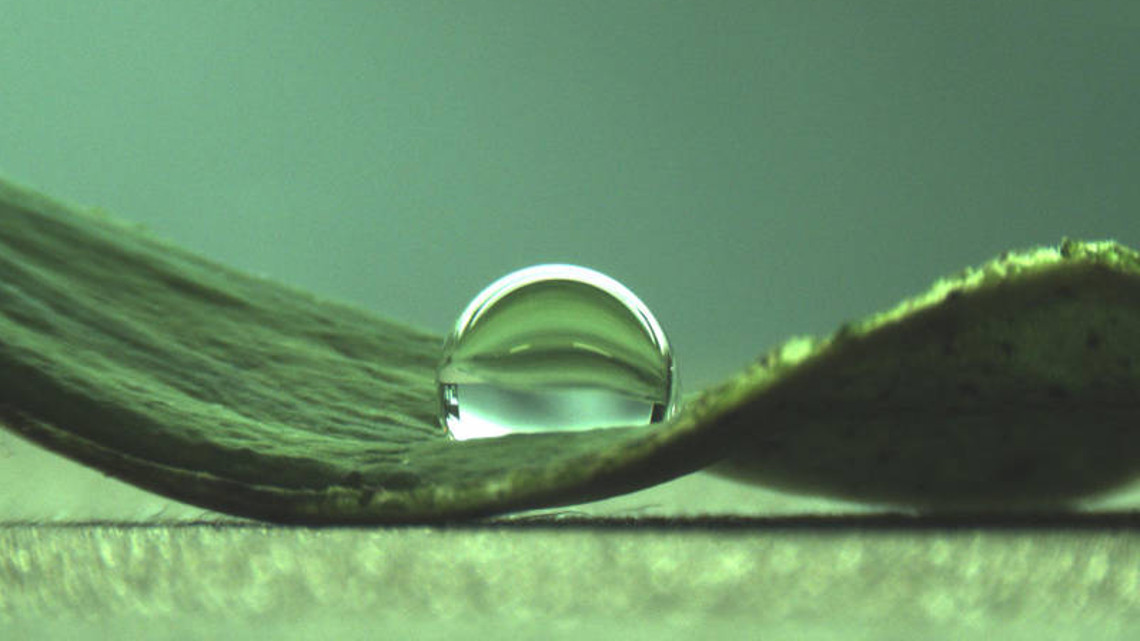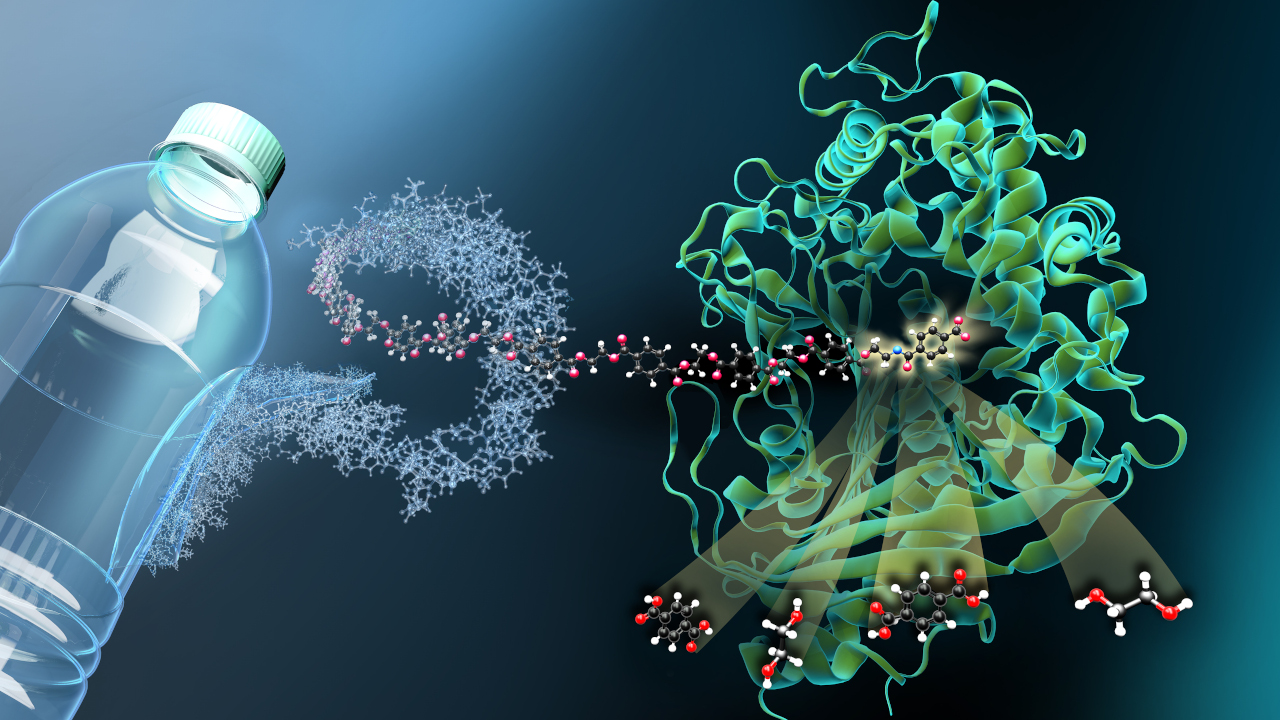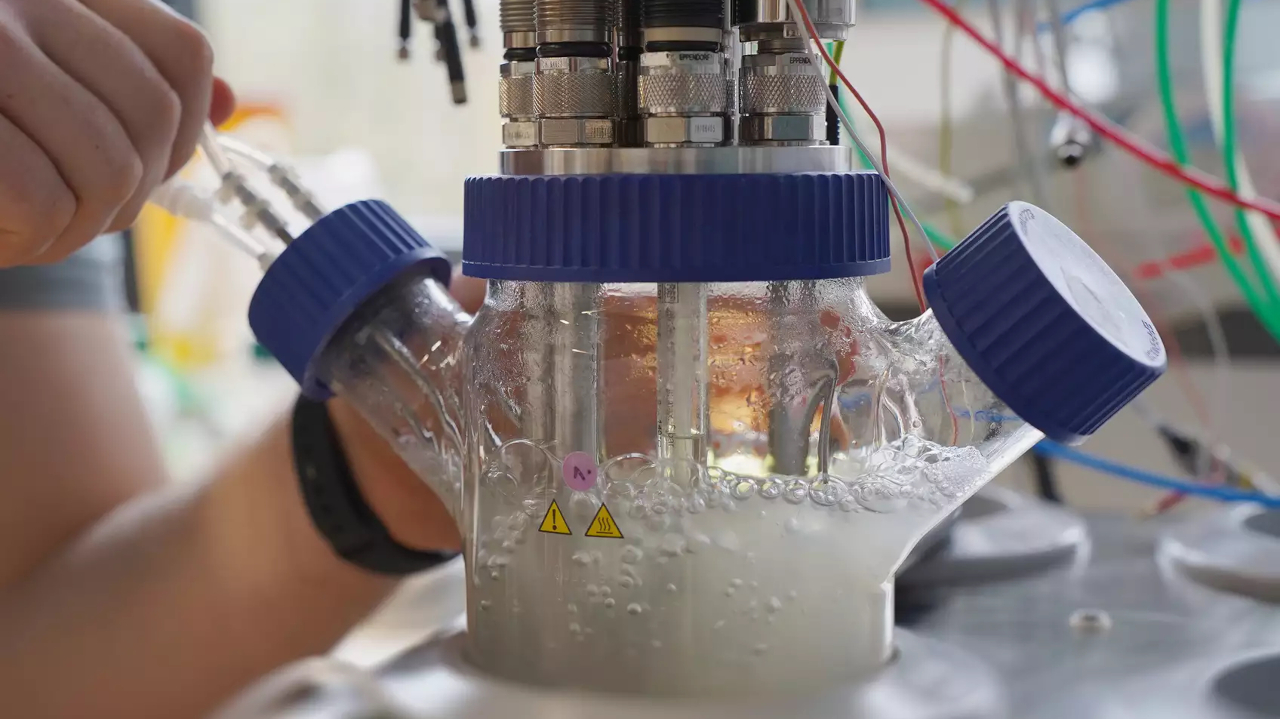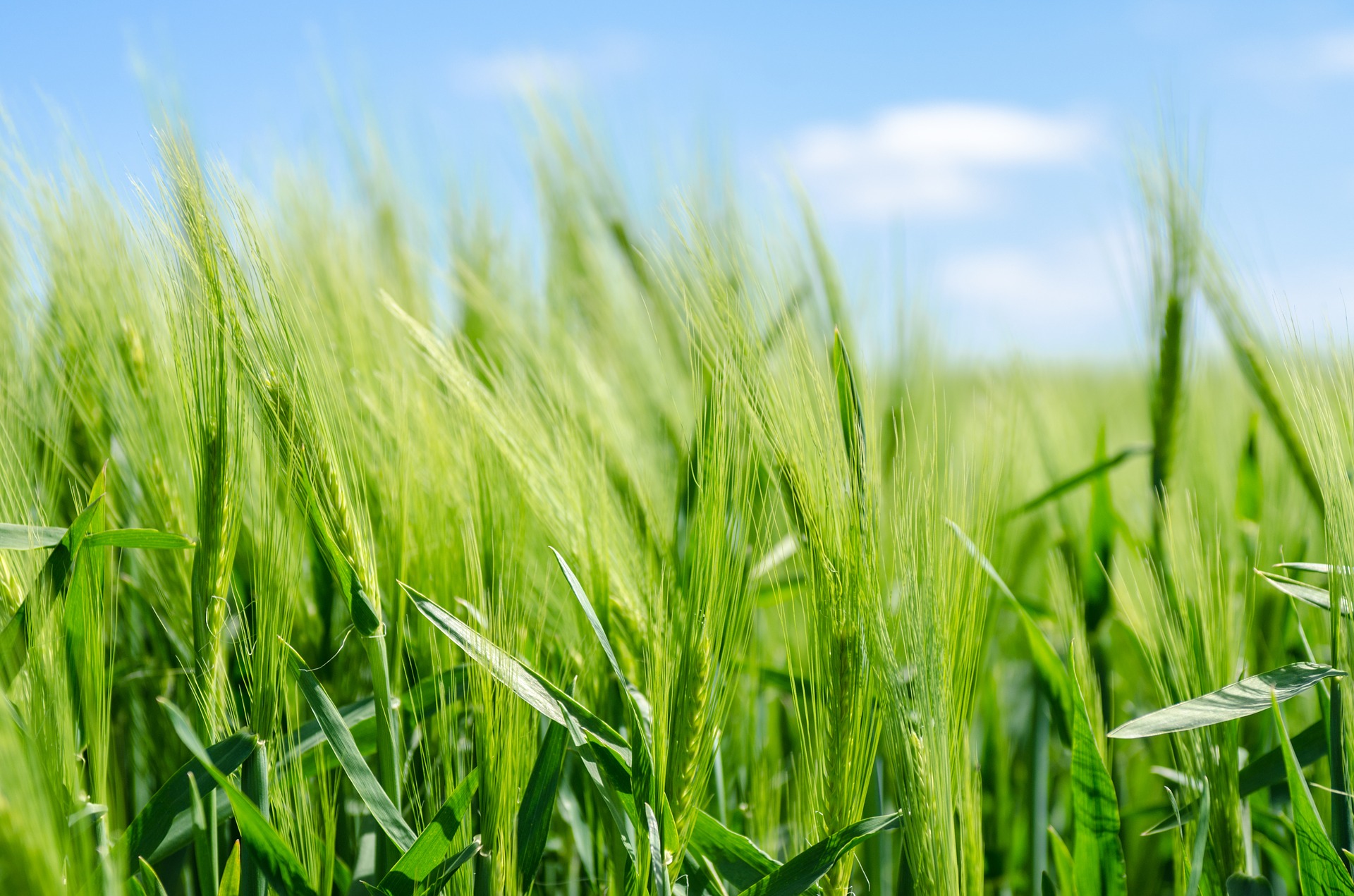Lotus effect copied by bacterial biofilms
Since they are often water-repellent, removing bacterial biofilms is very difficult. Munich-based researchers found out how these biofilms repel water by mimicking plants.

If drops of water roll off a surface this effect is known as the lotus effect. It is caused by specific surface structures, and industry often applies this effect to protect textiles or building surfaces. But bacteria and bacterial biofilms also produce this water-repellent surface, which makes them extremely difficult to clean off. Oliver Lieleg, Professor of Biomechanics at the Munich School of BioEngineering, and his colleagues investigated the underlying physical mechanisms that cause the resilience of bacterial biofilms. They published their results in the journal „NPJ Biofilms and Microbiomes“.
Bacteria protect themselves with biofilms
The bacterial slime in drainpipes or on medical equipment is extremely water-repellent, and thus very difficult to remove. This is due to a shell of self-produced polymers that bacteria surround themselves with. This shield in turn protects them from environmental hazards, and the combination of bacteria and their slime is called biofilm. In a recent study a team of scientists from the Technical University of Munich (TUM) headed by Oliver Lieleg measured the surfaces of biofilms using confocal reflection light microscopy. The project was carried out as part of the interdisciplinary cooperation SFB863 “Forces in Biomolecular Systems”.
Microbes mimic plants
“Our first realization was: not all biofilms are the same – even if they are produced by the same bacterium,” Lieleg says. The soil bacterium Bacillus subtilis, for instance, produces several distinct biofilms: sometimes, water droplets spread almost instantly across the surface. In other cases, they roll off the surface or cling to the surface in the form of spherical beads – even if the surface is tilted vertically. The researchers demonstrated that the microorganisms mimic the plant world to do so: namely the water-repellent behaviour of the leaves of lotus plants and roses. Lieleg and his team discovered that the surface structure of bacterial films is indeed very similar to those of the plant leaves. And like the leaves, biofilms also have specific rough surface structures on the micrometre and even the nanometre scale, which makes them water-repellent.
What makes the lotus effect so spezial are the small air bubbles that are trapped between the water droplet and the surface of the leaf. This does not occur for rose pedals, which is why water droplets roll off lotus leaves but stick to rose petals. The researcher were able to show that the nature of the surface structure of the biofilm decides whether a biofilm behaves more like a lotus leaf or a rose petal. And the surface structure in turn depends on the nutrients that are available to the bacteria during growth.
Targeting the suface structures directly
Bacteria in biofilms are often difficult to kill with antibiotics and other chemicals. Based on their results the researchers propose to tackle the water-repellent properties of biofilms instead: “An antibacterial substance cannot work if it is unable to reach the surface of a biofilm because it rolls off. Thus, we need to modify this water-repellent surface texture,” Lieleg explains. “This would be a new approach to the removal of biofilms from surfaces such as tubes, catheters, and infected wounds.”
jmr


